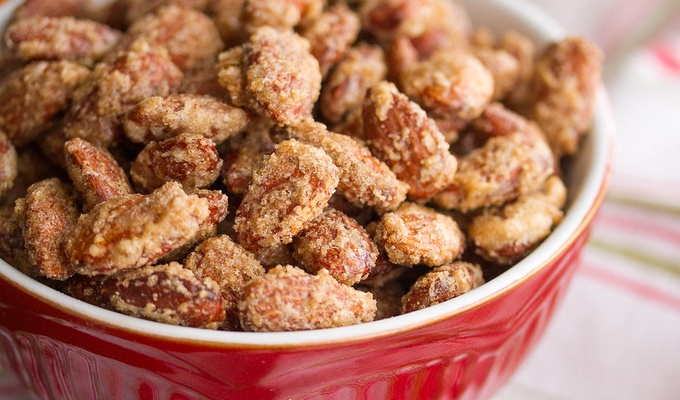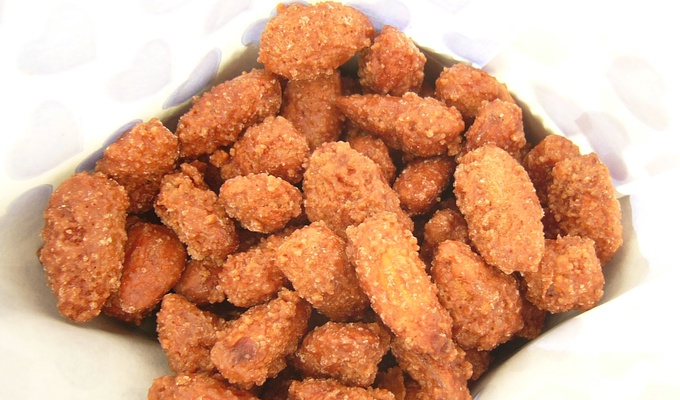Candied almonds, also called pralines are nuts that have been coated in caramelized sugar. They are a popular holiday treat, especially in Europe, where they are often sold are Christmas markets and fairs.
In France, they are usually simply called pralines, but might also be called amandes grillées. In Spain they are garrapiñadas. In Switzerland and Germany they are called Gebrannte Mandeln. In Denmark, they are brændte mandler, in Norway they are brente mandler, and in Sweden they are brända mandlar.
Note that "praline" has numerous other meanings and could refer to a Belgian filled chocolate, to a creamy fudge-like pecan candy from the southern United States, or to a paste made from ground caramelized nuts in candy-making; see praline.
Technique
The technique described here dates back to the 17th century and is said to have been invented by Clément Jaluzot, chef for the French diplomat César de Choiseul, comte du Choiseul-Praslin, from whom the confection derives its name.
The nuts are usually toasted in advance, which enhances their flavor and ensures that they remain crisp once coated with caramel. Toasting is typically done in an oven or a dry pan to release the almond oils and intensify flavors.
Sugar is placed in a heavy-bottomed pan, often with a small amount of water to help it dissolve evenly. The sugar is heated gently until it melts and begins to caramelize, turning a golden brown color. Care must be taken to avoid overcooking the sugar, as burnt caramel imparts a bitter flavor.
The sugar passes through several stages as it heats. Initially, it liquefies, then begins to bubble and change color as it reaches around 170°C (338°F). The goal is to achieve a rich amber hue without burning the sugar, which can happen quickly once caramelization begins.
Once the sugar has reached the desired color, the toasted nuts are quickly added to the caramelized sugar. They are stirred constantly to ensure an even coating. The nuts must be added while the caramel is still liquid, as it hardens rapidly when it cools.
This stage requires swift and continuous motion to prevent clumping, ensuring that each nut is evenly coated with the caramelized sugar.
After the nuts are fully coated, they are quickly spread out on a silicone mat or parchment paper to cool. This prevents them from sticking together as they harden.
Once cooled, the caramelized nuts will form a hard, brittle coating around each nut, giving them a crunchy texture and a sweet, slightly burnt sugar flavor.

